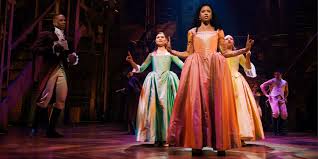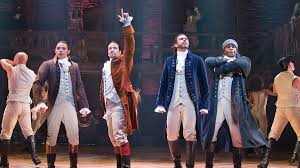Hamilton (2020), directed by Thomas Kail, is more than a filmed stage production — it’s a cinematic window into one of the most innovative and celebrated musicals in Broadway history. Capturing the original cast’s electric performance at the Richard Rodgers Theatre, the film adaptation transforms Lin-Manuel Miranda’s genre-defying work into a powerful and intimate experience.
Blending hip-hop, R&B, and classic musical stylings, Hamilton reimagines the story of America’s founding through a modern, multicultural lens. Miranda’s lyrics are intricate and exhilarating — dense with wordplay, emotion, and historical resonance. The narrative traces Alexander Hamilton’s rise from an orphaned immigrant to a central figure in the American Revolution and the creation of the U.S. financial system, all while exploring his ambition, ego, relationships, and tragic end.


The performances are uniformly stellar. Leslie Odom Jr. brings depth and nuance to Aaron Burr, the story’s conflicted narrator; Daveed Diggs dazzles as both the flamboyant Marquis de Lafayette and the swaggering Thomas Jefferson; Renée Elise Goldsberry is commanding and emotionally riveting as Angelica Schuyler. While Lin-Manuel Miranda’s vocals may not be the strongest, his portrayal of Hamilton pulses with intellect, urgency, and vision.
Kail’s direction allows the camera to become part of the storytelling. This is not a static recording — it’s dynamic and immersive, capturing the sweat, expression, and kinetic brilliance that define the stage show. The film brings viewers closer to the performance than a theater seat ever could.
More than a musical, Hamilton is a cultural milestone. It has sparked national conversation about historical representation, racial casting, and the myths America tells itself. While it’s been critiqued for romanticizing certain founding figures and minimizing the brutality of slavery, its impact — artistically and socially — is undeniable.

Ultimately, Hamilton (2020) is an exhilarating fusion of history and innovation. It redefines what a stage production can be when brought to the screen and reminds us that history is not static — it’s something we constantly retell, reframe, and rediscover.
